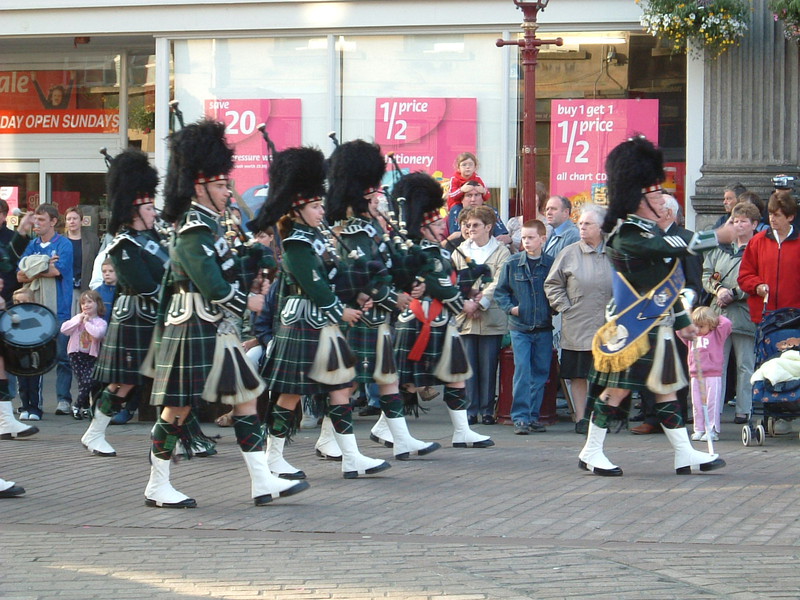
Oh dear, what a let-down. I've nothing to say about today except it went on and on and on, and I just put my head down and walked fast. It's the only way to treat the coastal A-road, I've discovered; I shan't miss it.
Unlike yesterday the scenery didn't make up for today's long tarmac stretch. Once the hills of Sutherland are out of the way, Caithness takes over and it's pretty much flat farmland all the way to Wick, with nothing but grassy fields to tempt the eye. I had the sea to my right for most of the day, but without the hills of the Ord or the gradients of Berriedale the view was utterly unspectacular.
Not only was the view insipid, but so were the sights (or, to be more accurate, there weren't any). Most of the settlements I passed through were little more than farms by the side of the road, and those with more than a handful of houses had nothing going for them except interesting names; Latheron, Lybster and Thrumster just didn't manage to distract me as I kept on plodding in the direction of Wick.
So I made good time, despite getting a nasty blister exactly where the big toe joins my right foot (try dressing that!). The end of this walk can't come quickly enough; walking along A-roads through tedious landscape is not my idea of fun.
Wick

Wick is a surprise, if only because it's a lot bigger than you might expect. During the 19th century Wick was the largest fishing port in Europe, with a fleet of around 1000 herring boats using the harbour, and although modern Wick is a rather dull, grey place, it hasn't shrunk much. The fishing fleet might not be as large as it used to be, but the town centre is still big enough to boast a pedestrianised high street, an airport and a Post Office that stays open until 5.30pm on a Saturday (quite a rarity outside major cities). But probably the biggest indicator of Wick's size is that it is home to the northernmost Wetherspoon pub in the world.
The reason I know this is because back in the Midlands I read an article in the Wetherspoon magazine that talked about Wick getting a new Wetherspoon pub. I remember the article because it made me realise my obsession with blisters is relatively normal, for it describes a man whose hobby – yes, his hobby – is visiting Wetherspoon pubs via train. Check out this excerpt:
There's no denying that Tim Davis is a fan of all things Wetherspoon. For the 47-year-old electronics tester has covered tens of thousands of miles visiting the company's pubs during the past six years. To date Tim, of Stone, Staffordshire, has visited 618 Wetherspoon pubs and Lloyds No.1 Bars, including all of those in Wales, all but one in Scotland and the vast majority in England. His aim is to visit the remaining 24, which include all nine Wetherspoon pubs in Northern Ireland.

That 'one in Scotland' is the Alexander Bain, the newly opened Wetherspoon pub in Wick, so I felt duty bound to sound it out in tribute to the dedication shown by this fellow native of Staffordshire. Just as I expected, it's exactly the same as every other Wetherspoon pub I've ever been into, but there is one subtle difference apart from the emphasis on Scottish beers. Forget the accents, forget the different approaches to beer, forget the football leagues and for Christ's sake forget Braveheart; the real proof that England and Scotland are two distinct nations is in the Wetherspoon menu, because there, proud as mustard and at the knockdown price of £3.20, you can get a plate of Haggis, Neeps and Tatties. Along with the availability of Irn-Bru as a soft drink in McDonald's, I think we can chalk that up as a definite victory for Scottish nationalism. Hurrah!